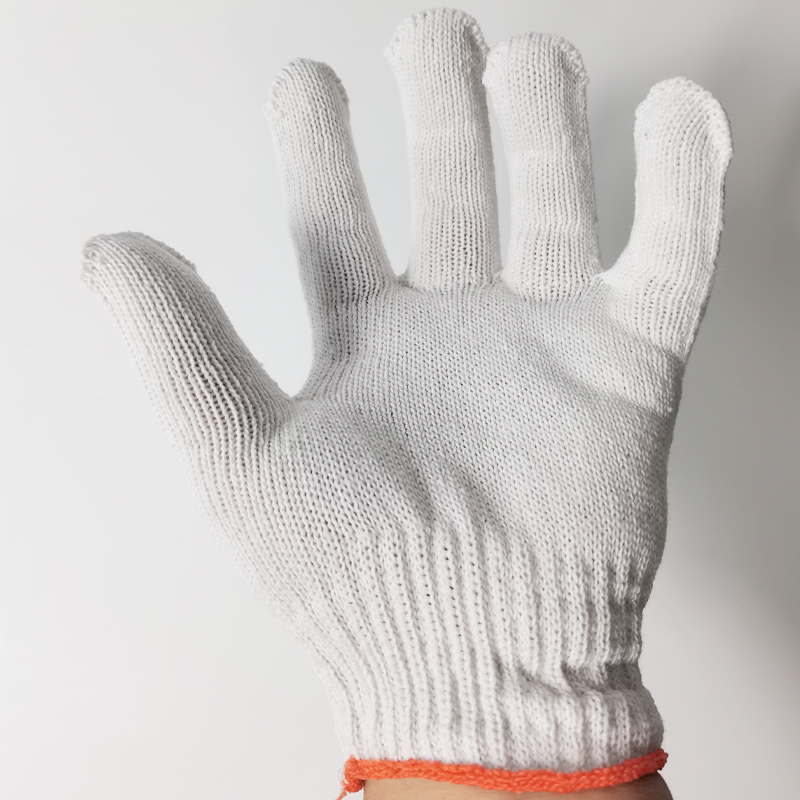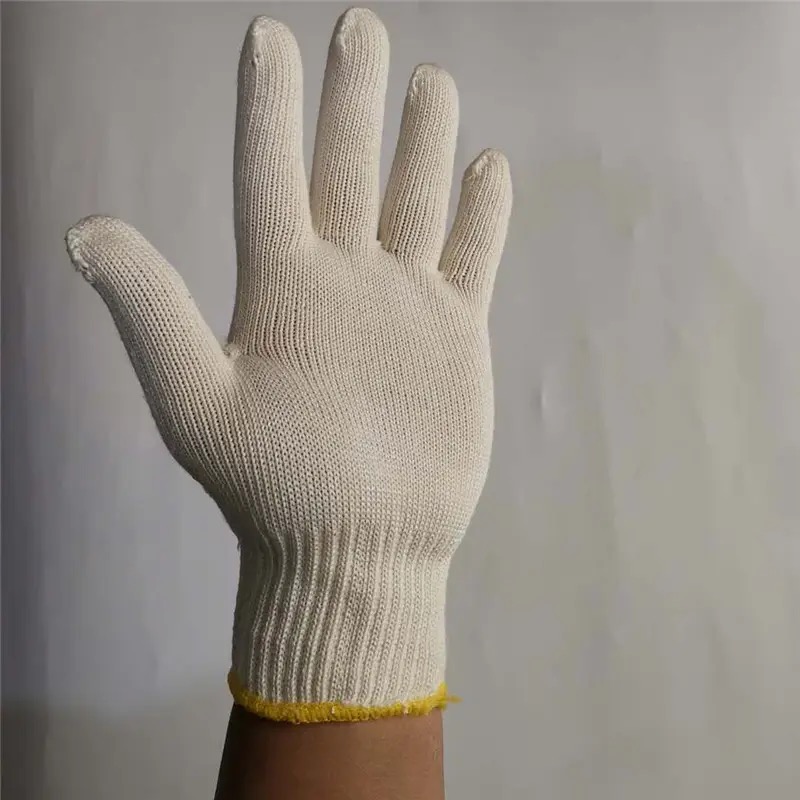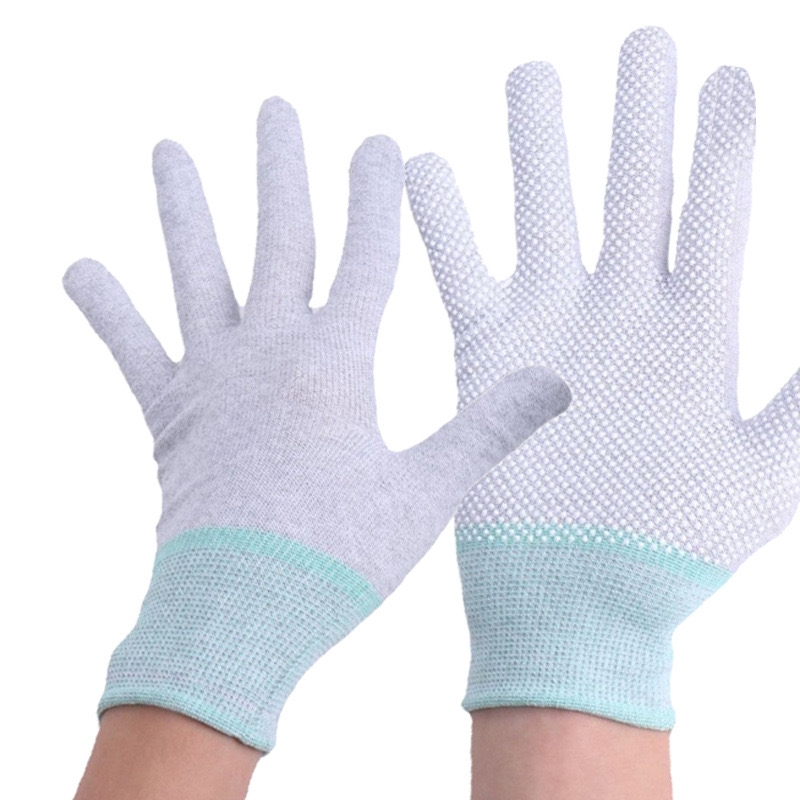Ningbo Toprise Security Products Co., Ltd., as a company with 20 years of experience in exporting cotton yarn gloves, is dedicated to providing effective gloves protection to customers worldwide. Here, we share how to choose the right yarn for cotton yarn gloves manufacturing.
1. Choosing the right yarn for cotton yarn gloves manufacturing
As we discussed before in another article How to Choose the Right Yarn for Cotton Yarn Gloves Manufacturing, we must choose the right type of yarn with the right yarn count for gloves production.
2. Preparation for weaving
Yarn twist: The twist and tension of the yarn should be adjusted before weaving to ensure that the yarn is not too tight or too loose, which will affect the strength and comfort of the glove. Here are some key points for adjusting the twist of cotton glove yarn:
- Twist and strength: Yarn twist of cotton gloves is an important factor affecting the quality and performance of gloves. Adjusting the twist can affect the strength, softness and wear resistance of gloves. In general, the greater the twist of the yarn, the higher the strength of the yarn. This is because a higher twist allows the fibers to hold together more tightly, increasing the tensile strength of the yarn. However, too much twist will make the yarn rigid, and affect the comfort of the glove.
- Twist and softness: A lower twist will keep the yarn soft and make the cotton yarn gloves more comfortable to wear, but the strength may be reduced. Therefore, comfort and strength need to be balanced when we are adjusting the twist.
Twist and wear resistance: A moderate twist can improve the wear resistance of gloves. Too low twist will lead to loose fibers and poor wear resistance; Too much twist can cause the yarn to be too tight and the glove to be worn too quickly.
- Twist adjustment method: According to different uses, you can adjust the twist. If you need to produce durable and wear resistant gloves, you can appropriately increase the twist of the yarn. If it is to produce comfortable gloves for everyday lives, why not reduce the twist and increase the softness of the gloves?
- Twist standards for different yarns: For cotton gloves, the standard of yarn twist may be set according to the fineness of the yarn and the needs for using. In fact, it is necessary to determine the appropriate twist range by testing the physical properties of the yarn (such as strength, elongation).
Before adjusting the twist, you’d better conduct experiments according to the specific production process requirements to find the right twist to meet the quality requirements and wear-resistance needs.
After the glove weaving machine is well set, load the selected yarns for the gloves production.
3. Glove weaving·
Weaving machine setting: Use the computer-controlled glove weaving machine to have the yarns of different specifications woven into the desired glove shape and size. According to the size and design of the gloves, the machine will automatically adjust the number of knitting needles or stitches and patterns, in which the knitting needle number of yarn gloves is crucial to the quality and performance of gloves. The stitching number will affect the thickness, comfort, elasticity and durability of gloves. It should be adjusted according to the gloves practical application and functional requirements.
Definition of stitch count: Stitch count usually refers to the number of horizontal stitches knitted per inch on glove fabric. The higher the stitch count, the tighter the glove is woven and the thinner the glove would be. That is to say higher stitches knitted gloves are more flexible and better fitted to hands. The lower the stitch count, the looser the stitching. And the yarn gloves will be heavier for better protection.
Common gauges:
- 7 gauge Gloves: The cotton yarn gloves will be thicker and more suitable for high requirements in strength, such as handling heavy object. These gloves are generally more wear resistant than higher-gauge gloves. It would be fine for workers to use it in low temperature environments.

- 10 gauge gloves: The specification is most widely used for industrial and household purposes. It strikes a balance between flexibility and protection.

- 13 gauge gloves: These gloves are very tightly woven. Often the cotton yarn gloves are thinner and more flexible, suitable for fine hand works, like the electronic assembling lines.

- 15 gauge or higher gloves: These ultra-high gauge gloves are designed for works with extremely high precision and sensitivity. But they offer relatively limited protection.

Gauge specs and functions:
- Flexibility: The higher the glove gauge is (such as 13 needles and 15 needles), the better the flexibility will be. It’s suggested when finger flexibility comes first in workplace such as electronic assembly and meticulous operation.
- Protection: yarn gloves made in 7 needles and 10 needles are a bit thicker and provide users with more protection, suitable for wear resistance, cutting resistance or heavy duty applications.
- Comfort: 15 gauge yarn gloves fit the hand better. User could feel much more comfortable compared wearing 7 or 10 gauge yarn gloves. However, the low stitched knitted cotton yarn gloves would be a better choice against coldness.
How to select the number of needles: It depends on the needs of the specific use. For more protection and durability, a low stitch count is a better choice. But for tasks that need extra flexibility and touch, a high stitch count is more appropriate.
Knitting process: Seamless weaving and formation in one time can improve wearing comfort and durability. Different gloves require different needle spacing and yarn layers to adapt to different protection purpose. ·
Partly reinforced treatment: Gloves are prone to wear on the palm and fingers. You can have them strengthened by multi-layer weaving or special weaving.
4. Post-processing ·
Inspection and trimming: All the yarn gloves will be inspected strictly, trimmed to remove the excess threads, and checked against any stitches skipped and loose thread. ·
Glove finishing: For a better final looking and dimensional stability, steam shaping may be required.
5. Functional treatment (optional)
Coating treatment: Depending on the purpose for the gloves usage, the palm or finger part can be dipped or coated (such as in PVC, latex, nitrile), and then heated or dried by natural air. The treatment is done usually for better properties related to anti-slip, anti-wear, anti-oil and etc.
6. Personalized customization (optional) ·
Customized Logo: Customer often prefer to add trademark or logo, which can be printed, embroidered or woven.
If you have any questions about the production of the cotton yarn gloves or any purchase demand for cotton yarn gloves, contact us freely.


